A pulled muscle, also known as a muscle strain, is a common injury that can occur during physical activity or sudden movements. Among those experiencing this discomfort, a primary concern often surfaces: How long does it take for a pulled muscle to heal? While the typical healing time ranges from a few days to several weeks, numerous factors can influence this timeline. Factors such as the severity of the strain, the affected muscle group, and proper treatment and rehabilitation play crucial roles in the healing process. Understanding these factors is essential for effectively managing a pulled muscle and facilitating a speedy recovery. We will delve into these details further at the end of this article to provide comprehensive insights into the healing process of pulled muscles.
What is a pulled muscle?
A pulled muscle, also known as a muscle strain or muscle tear, refers to an injury involving the stretching or tearing of muscle fibers and surrounding connective tissues. This injury commonly occurs due to sudden or excessive exertion, overuse, improper lifting techniques, or inadequate warm-up before physical activity. Pulled muscles can affect any muscle in the body but often occur in the back, neck, shoulders, thighs, or calves. Symptoms may include pain, swelling, bruising, stiffness, and limited range of motion in the affected area. Treatment typically involves rest, ice, compression, elevation (RICE), pain management, and gentle stretching exercises to promote healing and prevent further injury.
Types of Muscle Strains:
Here are details on the types of muscle strains:
1. Grade 1 Muscle Strain (Mild):
- A Grade 1 muscle strain is considered mild and involves minimal damage to muscle fibers.
- Symptoms may include slight discomfort, tenderness, and mild swelling in the affected area.
- Range of motion is generally not significantly impacted, and there may be minimal or no loss of function.
- Recovery time is usually shorter, ranging from a few days to a couple of weeks with appropriate rest and conservative treatment.
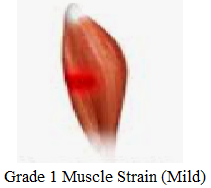
2. Grade 2 Muscle Strain (Moderate):
- A Grade 2 muscle strain is more severe than Grade 1 and involves partial tearing of muscle fibers.
- Symptoms may include moderate to severe pain, swelling, bruising, and tenderness in the affected muscle.
- There may be noticeable limitations in range of motion, strength, and function, making daily activities challenging.
- Recovery time for a Grade 2 strain is typically longer, ranging from several weeks to a few months, depending on the extent of the injury and adherence to treatment.
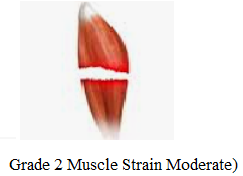
3. Grade 3 Muscle Strain (Severe):
- A Grade 3 muscle strain is the most severe and involves complete tearing or rupture of muscle fibers.
- Symptoms are usually intense and may include severe pain, swelling, bruising, and tenderness, often accompanied by a visible deformity or gap in the muscle.
- Significant loss of function and mobility is common, with an inability to bear weight or use the affected muscle effectively.
- Recovery from a Grade 3 strain can be prolonged, requiring several months of intensive treatment, including rest, rehabilitation, and possibly surgical intervention to repair the damaged muscle tissue.
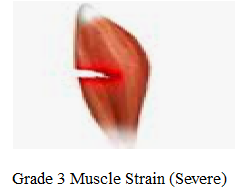
4. Acute Muscle Strain:
- An acute muscle strain occurs suddenly and is often the result of a traumatic event or forceful movement, such as lifting a heavy object or sudden acceleration during sports.
- Symptoms typically develop immediately or shortly after the injury and may range from mild to severe, depending on the extent of damage to the muscle fibers.
- Treatment for an acute muscle strain involves immediate first aid measures, followed by rest, ice, compression, elevation (RICE), and medical evaluation to determine the severity of the injury and appropriate management.
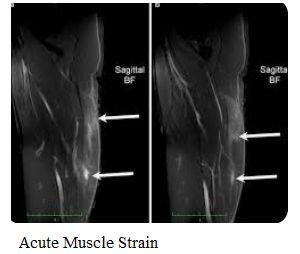
5. Chronic Muscle Strain:
- A chronic muscle strain develops gradually over time due to repetitive or overuse activities, such as repetitive lifting, running, or poor posture.
- Symptoms of chronic muscle strain may be subtle initially but worsen over time with continued activity, leading to persistent pain, stiffness, and weakness in the affected muscle.
- Treatment for chronic muscle strain focuses on identifying and addressing underlying factors contributing to the injury, such as ergonomic issues, muscle imbalances, or overtraining, along with targeted rehabilitation exercises to strengthen and restore function to the affected muscle group.
Understanding the different types of muscle strains and their characteristics can help individuals better recognize and manage these common injuries, facilitating optimal recovery and preventing complications.
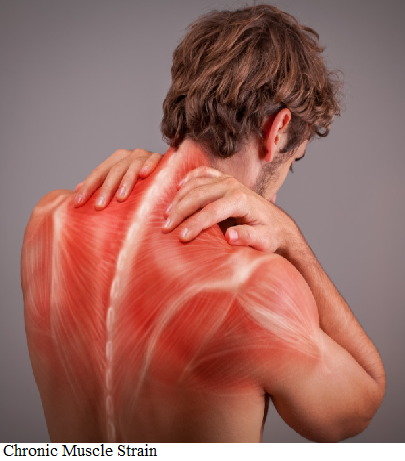
Symptoms of a Pulled Muscle:
Here are detailed symptoms of a pulled muscle:
- Pain: Pain is the most common symptom of a pulled muscle. The pain may vary in intensity depending on the severity of the injury. It can range from mild discomfort to sharp, stabbing pain. The pain is typically localized to the area of the muscle that has been strained.
- Swelling: Swelling often accompanies a pulled muscle. The affected area may appear swollen or inflamed due to the body’s inflammatory response to the injury. Swelling may be noticeable immediately after the injury or may develop gradually over time.
- Bruising: Bruising, or discoloration of the skin, may occur as a result of bleeding beneath the skin’s surface. This can cause the skin to appear red, purple, or blue in the area surrounding the pulled muscle. Bruising may not always be present, especially in milder cases of muscle strain.
- Tenderness: The affected muscle may be tender to the touch. Gentle pressure applied to the area may elicit discomfort or pain. Tenderness may also be present when moving the affected muscle or joint.
- Stiffness: Stiffness or reduced range of motion is common with a pulled muscle. The injured muscle may feel tight or stiff, making it difficult to move the affected limb or joint. Stiffness may worsen with rest and improve with gentle movement and stretching.
- Weakness: Weakness in the affected muscle or limb is another symptom of a pulled muscle. The injured muscle may feel weak or unable to bear weight or resist force as effectively as usual. This can impact daily activities and functional movements.
- Muscle Spasms: In some cases, muscle spasms may occur as a result of a pulled muscle. Muscle spasms are involuntary contractions of the muscle fibers and can cause sudden, sharp pain and temporary loss of function in the affected area.
- Difficulty Moving: Individuals with a pulled muscle may experience difficulty moving the affected limb or joint. Movements that involve the injured muscle may be painful or limited, leading to functional impairment and reduced mobility.
- Warmth: The affected area may feel warm to the touch due to increased blood flow and inflammation associated with the injury. This warmth may be noticeable immediately after the injury and may persist as the body’s healing response continues.
- Visible Deformity: In severe cases of muscle strain, a visible deformity or bulge may be present in the affected muscle. This can indicate a more significant tear or rupture of the muscle fibers and may require medical attention.
It’s essential to seek medical evaluation if you experience severe or persistent symptoms of a pulled muscle, as they may indicate a more severe injury or underlying medical condition.
Treatment Options:
Treatment options for pulled muscles aim to relieve pain, reduce inflammation, promote healing, and restore function to the affected muscle. Here are detailed treatment options for pulled muscles:
- Rest: Rest is essential for allowing the injured muscle to heal. Avoiding activities that aggravate pain or strain the affected muscle is crucial during the initial phase of injury. Resting the muscle helps prevent further damage and allows the body to initiate the healing process.
- Ice Therapy (Cryotherapy): Applying ice packs or cold therapy to the injured muscle helps reduce pain, swelling, and inflammation. Cold therapy constricts blood vessels, numbs the area, and slows down the inflammatory response. Ice packs should be applied for 15-20 minutes at a time, several times a day, especially during the first 48 hours after the injury.
- Compression: Compression can help reduce swelling and provide support to the injured muscle. Compression bandages or wraps can be applied snugly around the affected area, but not too tight to restrict blood flow. Compression helps limit swelling and provides a sense of stability to the injured muscle.
- Elevation: Elevating the injured limb above the level of the heart helps reduce swelling and promote drainage of excess fluid from the affected area. Elevating the injured limb on pillows or cushions while resting can help minimize swelling and discomfort.
- Nonsteroidal Anti-Inflammatory Drugs (NSAIDs): Over-the-counter NSAIDs, such as ibuprofen (Advil, Motrin) or naproxen (Aleve), can help reduce pain and inflammation associated with pulled muscles. NSAIDs should be used according to the recommended dosage and duration to avoid potential side effects, such as stomach irritation or kidney damage.
- Physical Therapy: Physical therapy plays a crucial role in the rehabilitation of pulled muscles. A physical therapist can design a personalized exercise program to help improve flexibility, strength, and range of motion in the affected muscle. Physical therapy modalities such as heat therapy, ultrasound, electrical stimulation, and massage may also be used to promote healing and reduce pain.
- Stretching and Strengthening Exercises: Gentle stretching and strengthening exercises can help restore flexibility and muscle strength in the injured muscle. Gradually incorporating stretching and strengthening exercises into the rehabilitation program can help prevent muscle stiffness, weakness, and re-injury.
- Heat Therapy (Thermotherapy): Heat therapy, such as warm compresses or heating pads, can be used to relax tight muscles, increase blood flow, and promote healing in the later stages of injury. Heat therapy should be applied for 15-20 minutes at a time, several times a day, to help alleviate muscle stiffness and discomfort.
- Massage Therapy: Massage therapy can help relieve muscle tension, reduce pain, and improve circulation in the affected muscle. Gentle massage techniques, such as effleurage and petrissage, can help relax tight muscles and promote healing. However, massage should be performed with caution to avoid aggravating the injury.
- Immobilization: In severe cases of muscle strain, immobilization with a splint, brace, or cast may be necessary to protect the injured muscle and facilitate healing. Immobilization helps prevent further damage to the muscle and allows the injured tissue to repair itself.
- Medical Intervention: In some cases, medical intervention may be necessary for the management of severe or complicated muscle strains. This may include corticosteroid injections to reduce inflammation, regenerative medicine therapies such as platelet-rich plasma (PRP) injections, or surgical repair of torn muscle tissue.
- Home Care: In addition to the above treatments, individuals with pulled muscles should practice self-care measures at home to promote healing and prevent complications. This includes adequate hydration, proper nutrition, sufficient rest, and avoiding activities that strain the injured muscle.
It’s essential to consult a healthcare professional for an accurate diagnosis and personalized treatment plan for pulled muscles. Treatment recommendations may vary depending on the severity of the injury, the individual’s overall health, and any underlying medical conditions. Early and appropriate treatment can help expedite recovery and minimize the risk of long-term complications.
How Long Does a Pulled Muscle Take to Heal?
The healing time for a pulled muscle varies based on the severity of the strain, the specific muscle involved, and individual health factors. Here’s a general overview:
- Mild Strain (Grade I): Mild muscle strains usually involve minimal muscle fiber damage and typically heal within 1 to 3 weeks. Symptoms may include slight pain and stiffness, but there is generally no significant loss of strength or mobility.
- Moderate Strain (Grade II): Moderate strains involve a greater number of damaged muscle fibers and may take 3 to 6 weeks to heal. These strains often result in noticeable pain, swelling, and reduced strength and flexibility. Proper rest and rehabilitation are crucial for recovery.
- Severe Strain (Grade III): Severe muscle strains involve a complete tear of the muscle or tendon. Healing can take several months, often requiring 3 to 6 months or longer, depending on whether surgical intervention is needed. Severe strains cause significant pain, swelling, and loss of muscle function.
Factors that influence healing time include:
- Age: Younger individuals tend to heal faster than older adults.
- Overall Health: Good nutrition, hydration, and general health can expedite recovery.
- Rehabilitation: Adherence to physical therapy and rehabilitation exercises is crucial for a quicker recovery.
General Recovery Tips:
- Rest: Avoid activities that stress the injured muscle.
- Ice: Apply ice packs to reduce swelling and pain.
- Compression: Use compression bandages to support the muscle and minimize swelling.
- Elevation: Elevate the affected area to reduce swelling.
- Medication: Over-the-counter pain relievers, such as ibuprofen or acetaminophen, can help manage pain and inflammation.
- Physical Therapy: Engage in physical therapy exercises to restore strength and flexibility.
For persistent or severe symptoms, consult a healthcare professional for an accurate diagnosis and personalized treatment plan.
FAQs about Pulled Muscle
A pulled muscle is usually identified by sudden pain during activity, followed by soreness, limited range of motion, bruising, or swelling in the affected area.
Resting the muscle, applying ice to reduce swelling, using compression bandages, and keeping the muscle elevated can help it heal faster. Gentle stretching and strengthening exercises, once the initial pain subsides, also aid in recovery.
Minor muscle strains may feel significantly better within a few days, but complete healing often takes longer. The time required for a full recovery can vary depending on the severity of the strain.
If walking doesn’t exacerbate the pain, light walking is acceptable. However, it’s important to avoid strenuous activity that could worsen the injury.
Gentle massage may help to relieve tension and promote blood flow to the muscle, but it should be done with care to avoid further injury.
Yes, a pulled muscle may be sensitive to touch and can feel tender or painful when pressure is applied.
Signs of healing include a gradual reduction in pain and swelling, increased strength and flexibility in the affected muscle, and the ability to perform normal activities without discomfort.
Conclusion:
The healing time for a pulled muscle varies significantly based on the severity of the injury, the specific muscle affected, and individual factors such as age and overall health. Mild strains may heal within 1 to 3 weeks, moderate strains typically take 3 to 6 weeks, and severe strains can take several months to recover fully. Proper rest, treatment, and rehabilitation are crucial for a successful recovery. Always consult a healthcare professional if you experience persistent symptoms or if you are unsure about the severity of your injury.


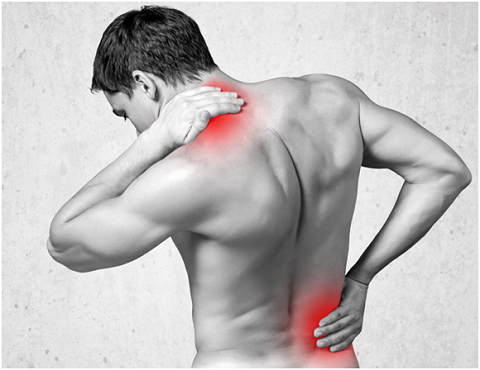
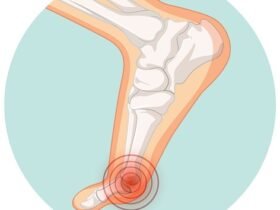




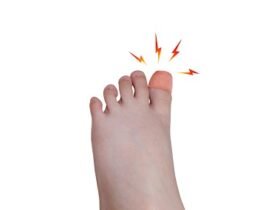



Got a Questions?
Find us on Socials or Contact us and we’ll get back to you as soon as possible.